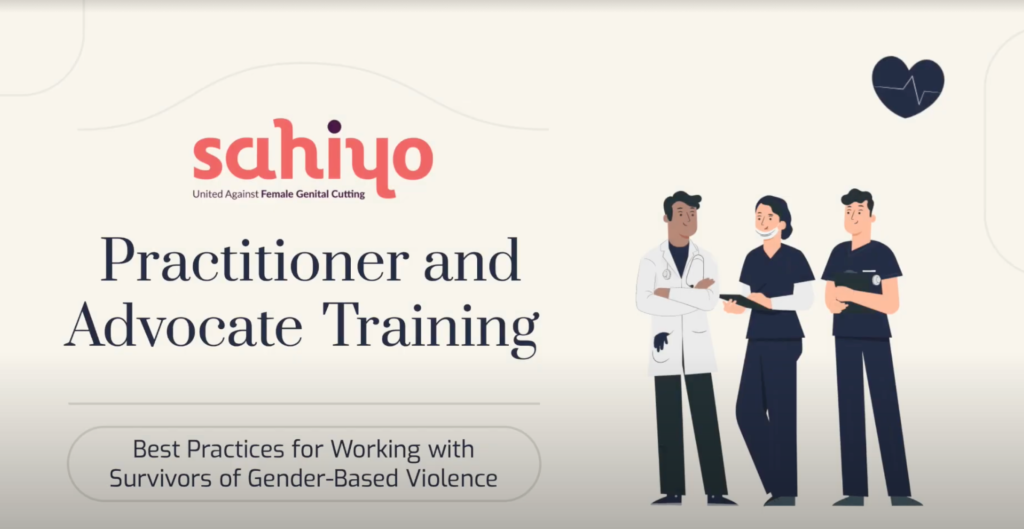Dear Maasi talks about clitoral anatomy

Dear Maasi is a column about everything you wanted to know about sex and relationships but were afraid to ask! It’s a partnership between Sahiyo and WeSpeakOut, and is for all of us who have questions about khatna (female genital mutilation/cutting or FGM/C) and how it impacts our bodies, minds, sexualities and relationships. We welcome you to submit your anonymous questions. Dear Maasi, I’ve been hearing that the clitoris is much bigger than the external pea-sized part we mostly hear about. This gave me some hope as a survivor of female genital mutilation/cutting. Does this mean I can have orgasms more easily? I’ve only had a few in my life, and I’ve been sexually active for twenty years. —Fatema Dear Fatema, I felt the same way when I first saw a 3-D depiction of the clitoris, which is far larger than a pea! In fact, it is wishbone-shaped and is about 10 centimeters from the tip of the glans to the end of one of the 4 legs. Watch this 1 minute video to get a better idea of its appearance. [youtube url=”https://www.youtube.com/watch?v=Zo7sy3g-_Qw”] Globally, sex education has been dismal. We don’t learn about sexual pleasure, communication, consent, or boundaries; and this is especially true for those of us born female. Although the 3-D model shown in the video has been around for over a decade, most people are unaware of it. Pro-FGM/C advocates believe that a girl’s sexuality can be controlled by cutting external genitalia. Among Bohras the target is the clitoral hood, but many survivors also report damage to the glans. While FGM/C is medically unnecessary, potentially dangerous and often traumatic, these cuts damage only a very small part of the clitoris (think of the tip of the iceberg analogy). So what does this mean for a survivor’s ability to experience pleasure? Well, it’s complicated… and hopeful. Here are a few things to consider, Fatema: 1) First, I want to emphasize that sexuality doesn’t have to be genitally, or orgasm, focused. We can feel pleasure through all parts of our bodies as well as through our minds. Even if you’d like more orgasms, broadening our concept of what’s erotic can be helpful. Watch this 2-minute video by Psychologist Esther Perel to get a sense of this or watch this longer video on erotic intelligence. 2) Trauma often gets stored in our bodies as stress responses that can interfere with pleasure. This can be true for people who haven’t experienced FGM/C, as well. You may have to untangle and heal the emotional trauma to enjoy more pleasure. 3) It is hopeful that even if one part of your clitoris may have been harmed, there are internal parts that can be accessed for pleasure. Read this short article on learning about what kind of touch might work for you. Fatema, enjoy your 10 centimeter-long clitoris! Sexual pleasure is our birthright. —Maasi About Maasi, aka Farzana Doctor: Farzana is a novelist and psychotherapist in private practice. She’s a founding member of WeSpeakOut and the End FGM/C Canada Network. She loves talking about relationships and sexuality. Find out more about her at http://www.farzanadoctor.com. Disclaimer: While Farzana is full of good advice, this column won’t address everyone’s individual concerns and should not be used as a substitute for professional medical or psychological care.
Practitioner and advocate training: Best practices for working with survivors of gender-based violence

In June Sahiyo partnered with Hidden Scars to host training for practitioners and advocates working with survivors of gender-based violence (GBV) and female genital cutting (FGC). Gender-based violence (GBV) is a reality for many women and girls. The World Health Organization reports that one in three women will experience sexual or physical violence in her lifetime. Yet, GBV often remains hidden and shrouded in silence and shame. At the core of providing better prevention, protection, health, and social support services for women and girls are stronger data, enhanced research, and community engagement. Our presentation explored how practitioners can provide trauma-informed care to survivors of GBV, using FGC as a case study. We also provided resources for clinicians and other front-line professionals who may come in contact with women impacted by both, and who are looking to better understand how to provide better care. While Sahiyo’s expertise is in addressing FGC, we acknowledge that FGC is a form of gender-based violence and child abuse. Our team felt that many of the lessons that can be learned about how to help survivors of FGC could also be applied to all forms of GBV. Like other forms of gender-based violence, such as domestic violence, FGC is a learned behavior of childhood, and is often surrounded by a culture of silence and shame, and is a form of generational violence. However, GBV can also include childhood marriage, rape, sexual assault, honor crimes, domestic violence, and other crimes against women. While we used FGC as a case study, our goal was to create training that would allow practitioners to provide better care to all survivors of gender-based violence. [youtube url=”https://www.youtube.com/watch?v=nya-MMeAlJ4″] During this event, we provided an overview of FGM/C and GBV, as well as shared videos from our Voices to End FGM/C project. These videos helped our audience better understand the complicated emotions and experiences survivors go through, and to begin to think about how they as providers can better support them in their journey toward healing. We also shared tools such as the George Washington University FGM/C Toolkit, Mumkin, and other resources that are available to help them and their organizations think about how to provide better care to survivors. Finally, in order to facilitate conversations and help our guests practice communicating with survivors, we also hosted mock conversations. These conversations were held with the goal to help practitioners become more comfortable speaking with survivors and to practice having productive conversations with patients. We strongly encourage anyone who works in healthcare or provides direct services to survivors of GBV or FGC to watch the recording of this event on our YouTube page, or check out these additional resources below: Addressing FGC in the Clinic: A Dialogue Between Survivors and Health Care Professionals Diagnosis, Management, and Treatment of Female Genital Mutilation or Cutting in Girls Female Genital Mutilation/Cutting: An Under-recognized form of Gender-Based Violence in the U.S.
